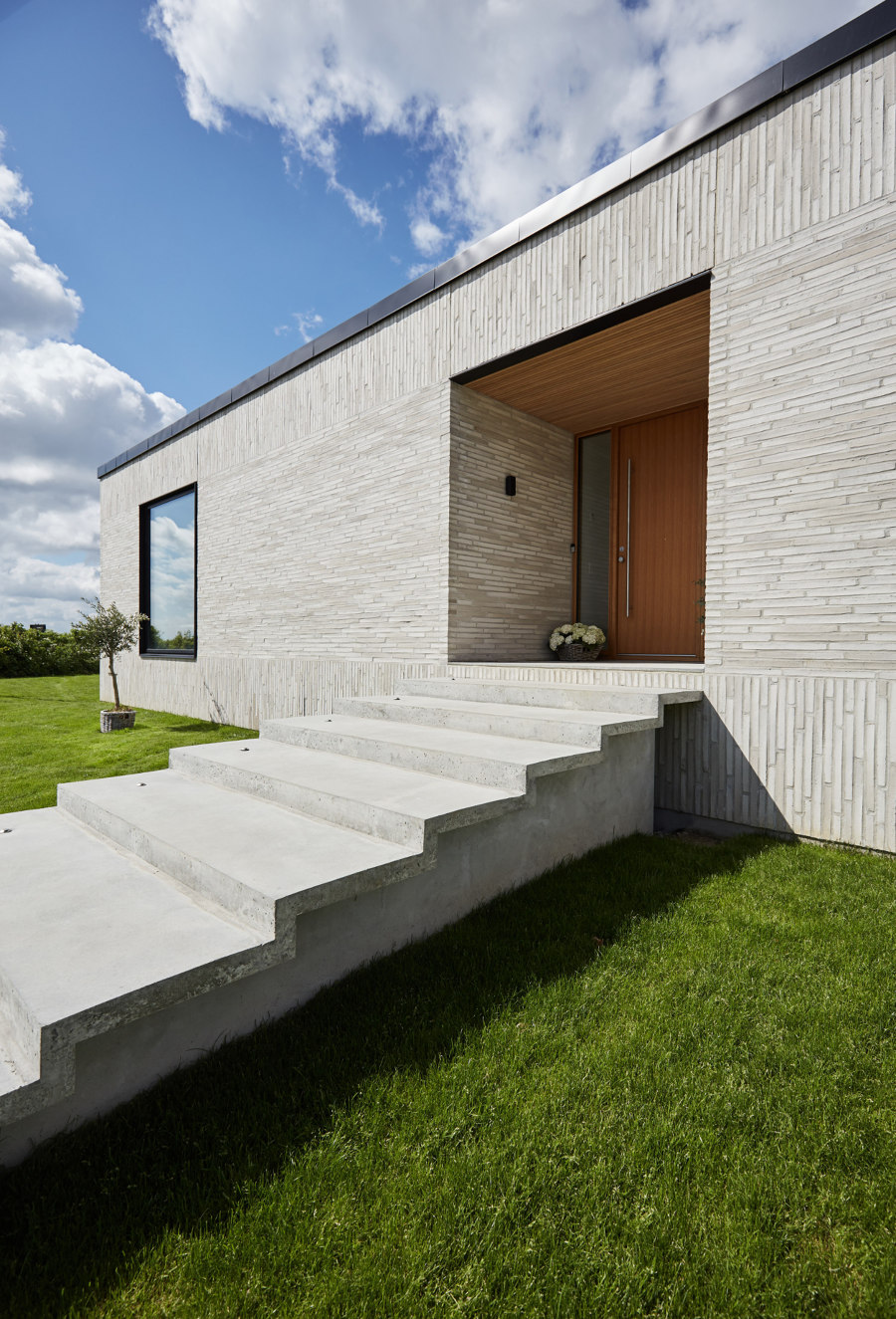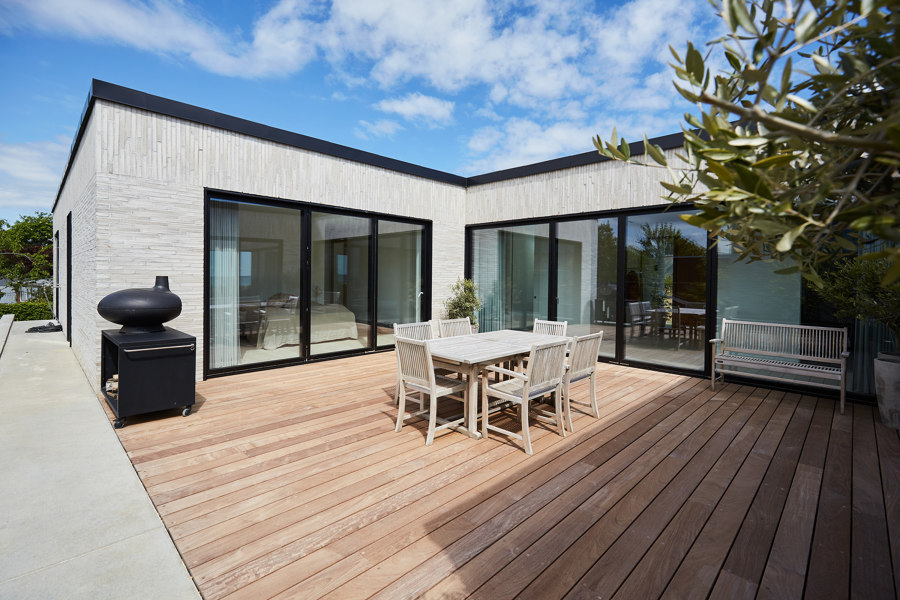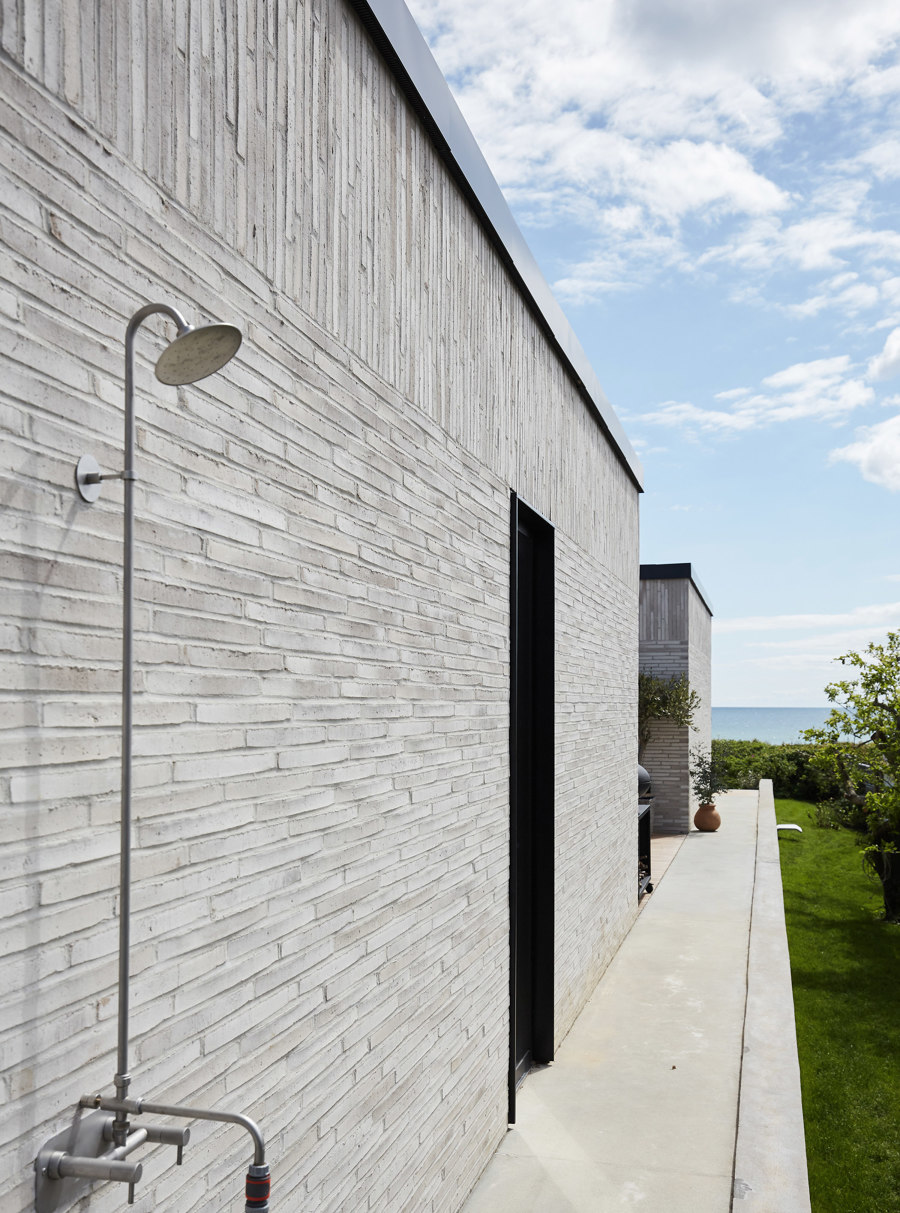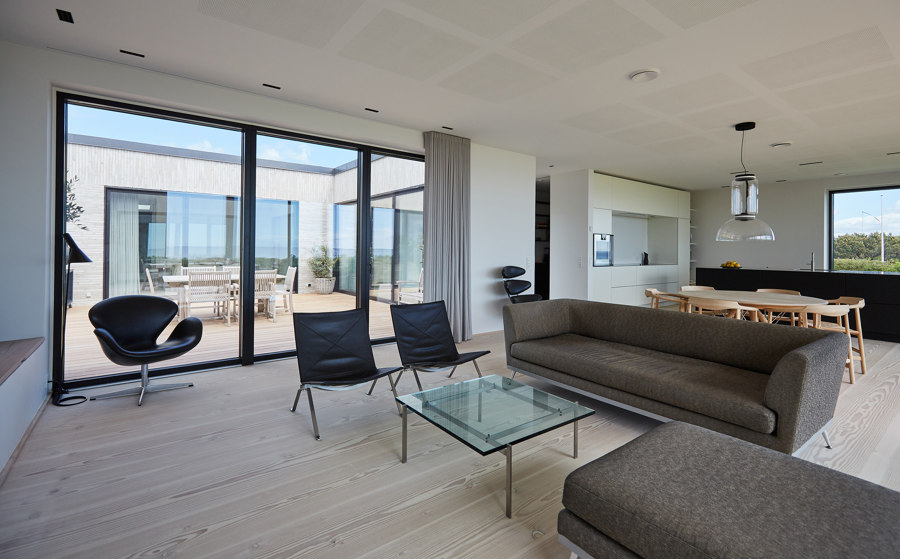Poetic brickwork: RANDERS TEGL
Brand story by Harriet Thorpe
Aalborg, Danemark
29.01.21
When it came to choosing a brick for its Casa Sand project in Aarhus, Denmark, Christoffersen & Weiling Architects decided on the Ultima from Randers Tegl. Find out why, here.
Randers Tegl’s Ultima brick brings crafted texture to Casa Sand, a coastal villa near Aarhus designed by Christoffersen & Weiling Architects
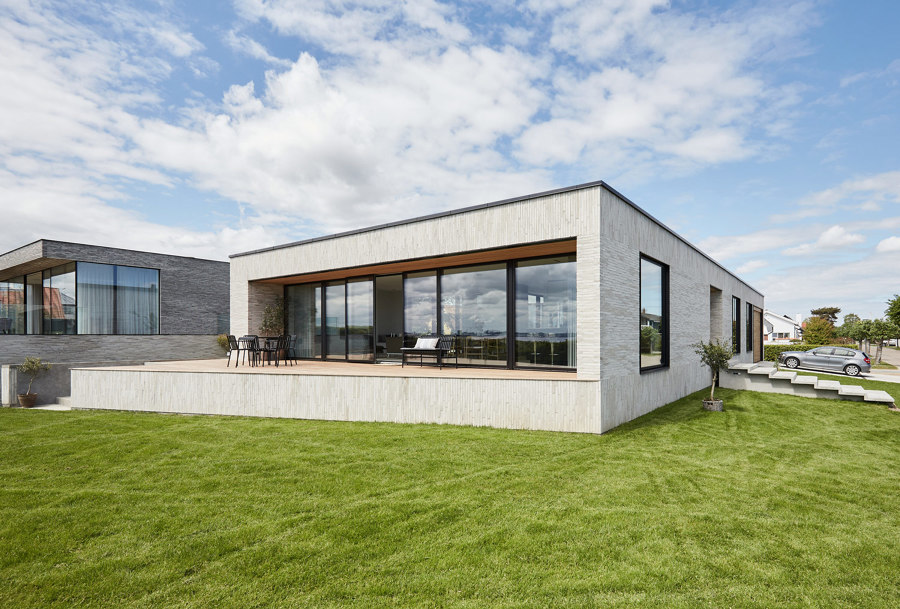
Randers Tegl’s Ultima brick brings crafted texture to Casa Sand, a coastal villa near Aarhus designed by Christoffersen & Weiling Architects
×Designers and architects might perceive the brick as a ‘traditional’ building material. It is certainly familiar and reliable. We have been using it to build our homes for centuries – the brick was an early indicator of human civilisation. Yet there’s one brick on the market that is challenging these established conceptions. Carrying tradition forwards in a new direction, this brick also meets the demands of forward-thinking, design-conscious aesthetes seeking something special and contemporary.
The Ultima brick from Randers Tegl achieves an unexpected and hybrid mix of heritage, craft, modern design and technology. Its long, slim form – double the length of two ordinary bricks with a height of just 38mm – challenges what we might expect visually from a brick. While the natural surface texture, a product of the waterstruck technique, results in its handcrafted feel.
Horizontal and vertical orientations of the elongated Ultima brick show how it can be used as a building material and a design tool
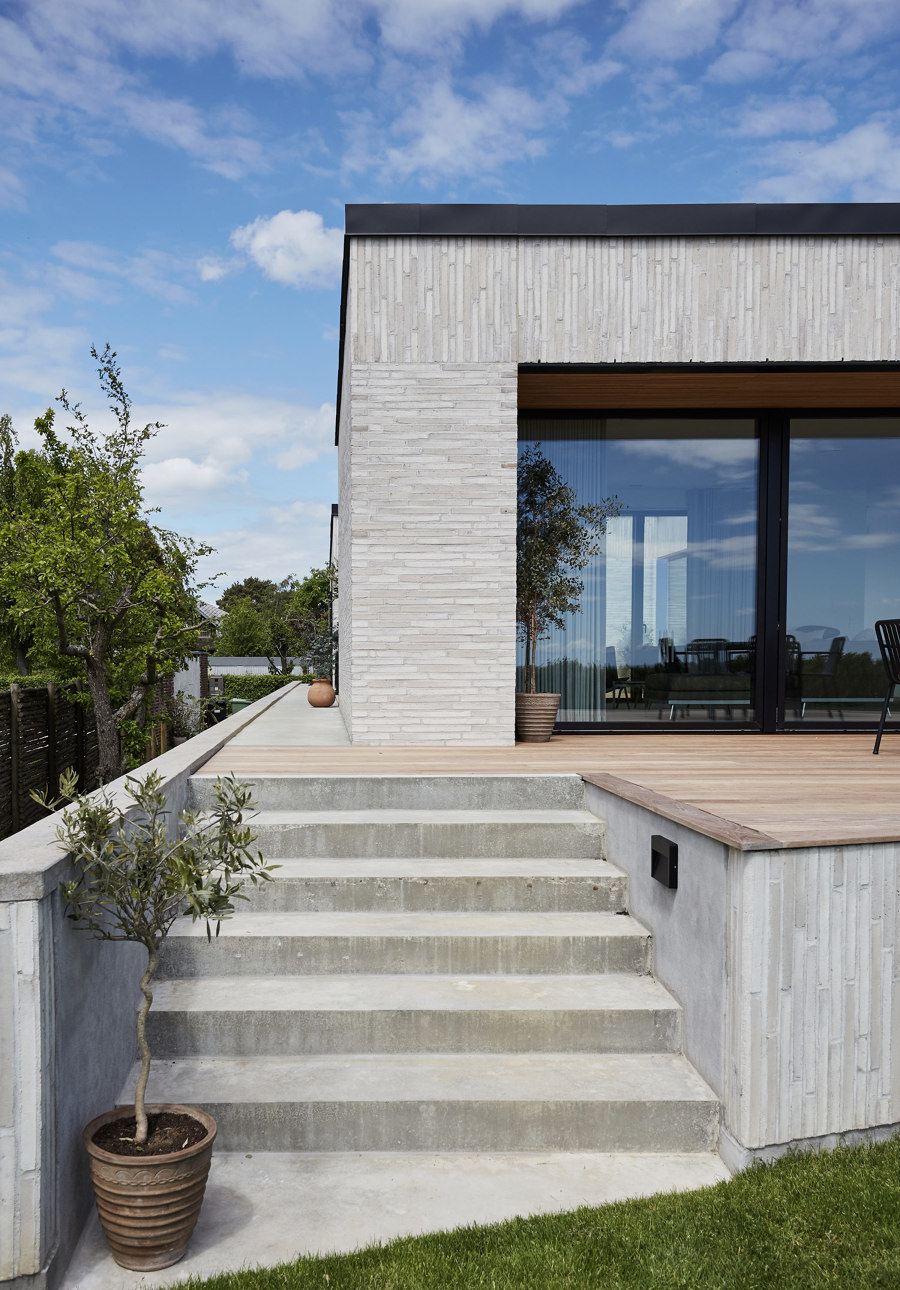
Horizontal and vertical orientations of the elongated Ultima brick show how it can be used as a building material and a design tool
×It may come as a surprise that this modern brick is the product of a company founded in 1911. Yet perhaps this is exactly why it is possible to find such harmony between contemporary design and traditional process. Danish brick manufacturer Randers Tegl has always taken an active role in the evolution of the brick – constantly thinking how it might provide new forms of expression, how we could use it in new ways, or how old techniques might learn new tricks.
When architecture is simple and poetic, the materials take centre stage, and must be of the highest quality
When designing the Ultima brick, Randers Tegl looked back in time to revive a centuries-old technique for the modern-day. The waterstruck method combines raw clay with water in a special technique, before it is burnt. The addition of water brings out the natural surface texture to an inconsistent, sculptural effect – no brick looks the same. So while it feels like a part of the earth itself, it also holds the technical advantages of a modern brick in strength and durability.
The architecture of Casa Sand defines a series of outdoor spaces for inhabitants, enhanced by the tactile and geometric qualities of the Ultima brick

The architecture of Casa Sand defines a series of outdoor spaces for inhabitants, enhanced by the tactile and geometric qualities of the Ultima brick
×Randers Tegl’s simple elongation of the Ultima, completely shifts what we expect from a brick. A new pattern emerges, the eye travels across the material in a different way, and the architecture evolves into a new form. The Ultima brick becomes an active design tool in its own right.
The Ultima brick from Randers Tegl achieves an unexpected and hybrid mix of heritage, craft, modern design and technology
This is exactly why Danish studio Christoffersen & Weiling Architects were drawn to the Ultima brick for their seafront villa near Aarhus, Casa Sand. Brick is a material long associated with Danish villas, from the golden age of the 1950s to today. As well as nodding to the traditions of the past, the architects wanted to bring something poetic to the architecture, and connect it further to the landscape.
The shapes of the elongated bricks echo the extreme horizontality of the coastline, while the colour of the brick was matched to the dunes
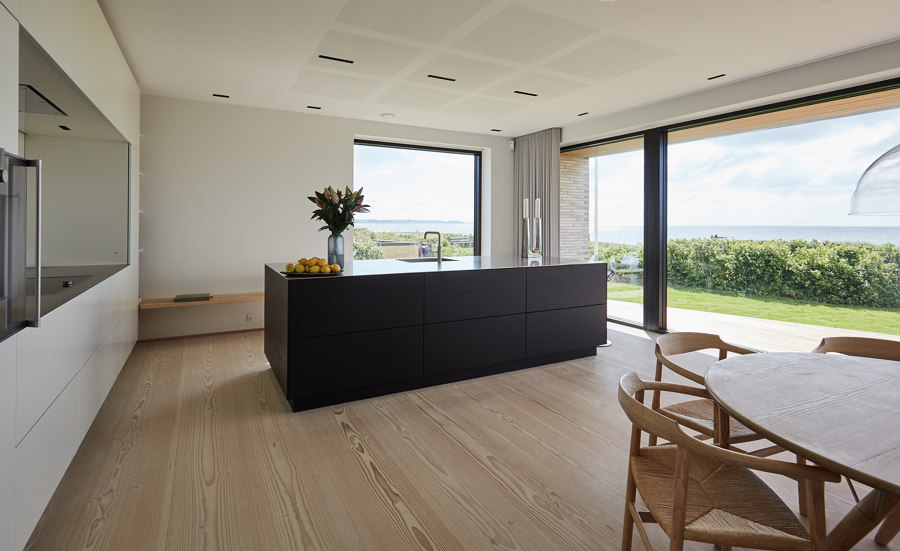
The shapes of the elongated bricks echo the extreme horizontality of the coastline, while the colour of the brick was matched to the dunes
×The Ultima brick was positioned in two orientations – a platform of a vertical bond at the base of the house, followed by a heavier upper level of a horizontally-oriented bond. The switch in orientations creates a beautiful visual effect that echoes the land, sea and horizon line of the coastal location.
Good design is always conscious of its context, especially Scandinavian design which is particularly attentive to nature. To further enhance this connection between architecture and place, Christoffersen & Weiling Architects chose a brick coloured to reflect the seaside environment; The sandy shaded RT 154 Ultima with reflective highlights. The Ultima series features 14 natural colours, so designers can match the bricks to any environment.
Niels Christoffersen and Erik Weiling, directors of Christoffersen & Weiling Architects, specially selected the Ultima brick to express the essential qualities of Scandinavian design

Niels Christoffersen and Erik Weiling, directors of Christoffersen & Weiling Architects, specially selected the Ultima brick to express the essential qualities of Scandinavian design
בFrom the softer blueish northern light to the warmer heat from the south. Daylight bounces off a light-tinted sand-coloured brick in a certain way. That’s no coincidence given the light conditions. Thoughtful Nordic design tradition is when material choices, layout and lines reach a higher meaning. You do not have to be an architect to see it. It’s just there,’ says Niels Christoffersen.
When architecture is simple and poetic, the materials take centre stage, and must be of the highest quality. That’s why at Casa Sand, the nuances of the elegant brick shine so brightly. The Ultima brick exudes traditional craftsmanship, reflects nature, expresses modernity – and Randers Tegl’s ambitions for the future, all at once.
© Architonic


